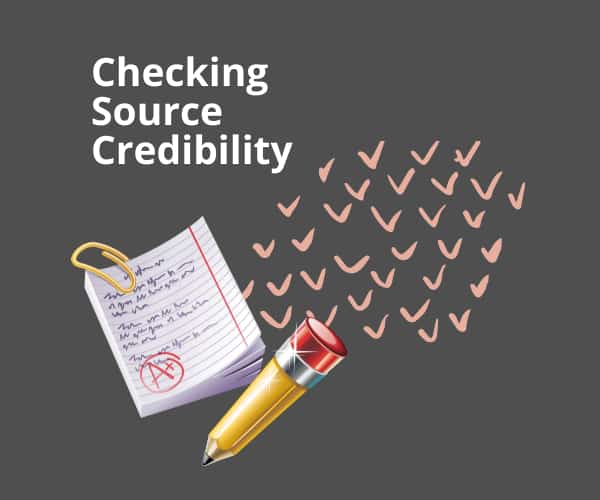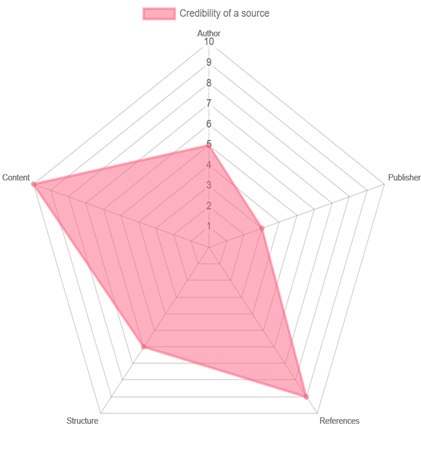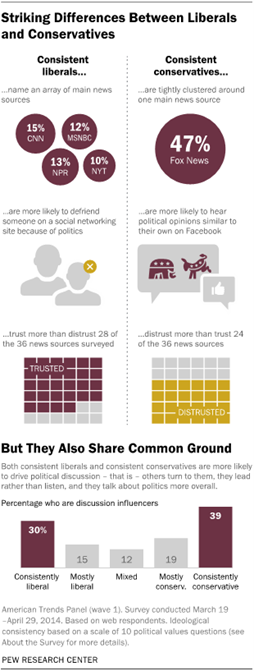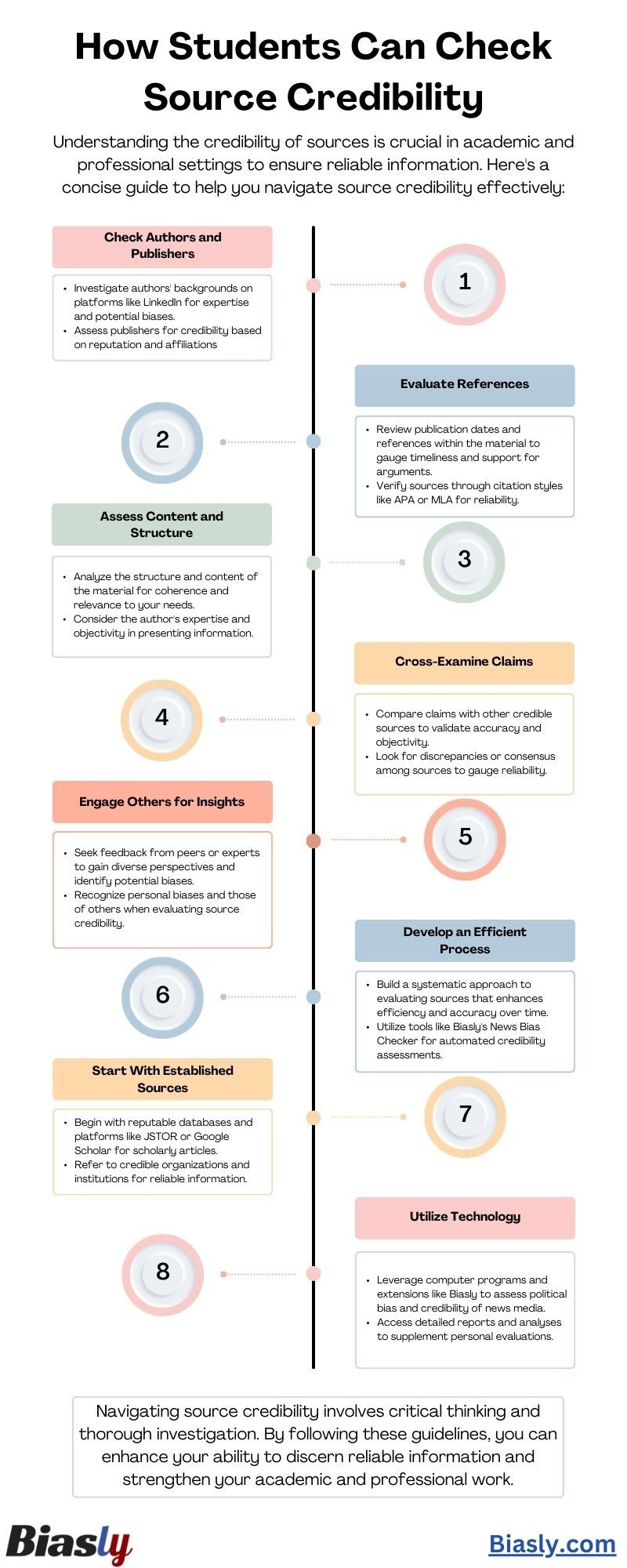
The first paper I wrote in college received a grade of 96%. I lost points because I cited from my textbook to prove Spain is a popular tourist destination. My professor commented, “Citing from a textbook is not credible and underwhelming.”
So how can we distinguish between credible and non-credible sources? Some sources, like my textbook, seem very professional but could be more credible to support specific arguments. This article is a guide for you to check source credibility, and here’s a summary:
- Check the authors and publishers of the source material
- Evaluate the references in the material
- Evaluate the body structure and contents
- Cross-examine the claims found in the content with other materials
- You’re not alone! (reach out to others)
- Create a sourcing process that is efficient for finding credible sources
- Start with materials that are more likely to be credible
- Utilize computer programs
1. Check the authors and publishers of the source material
Assume we found an interesting source to include in our article. Before reading the article, we’d better check its authors. To learn about them, we can go onto career platforms like LinkedIn to get more specific insights into their demographics, academic experiences, professional development, organization affiliations, personal hobbies, etc. Or, we can simply google them and search for their Facebook or Twitter accounts. If they are affiliated with educational, research, business, or other considerable organizations, a webpage with their profile will likely appear at the top of our results when we google them.
Having a better sense of who they are, we can evaluate a few aspects of the authors:
- Their competency in the relevant professional or specialized fields
- Are they prone to unintended bias or incentivized to produce bias?
- Their thoughts on certain subjects
- Reliability for the respective use case
These are the main factors of an author that shape the credibility of source material.
Next, we can conduct a similar analysis of its publishers. These publishers may be some organizations that the authors are affiliated with (ie. Reuters, WSJ), or they may be platforms where unaffiliated authors publish their works independently (ie. Medium, AP News). In many cases, the authors may also have individualized platforms to post information, in which case they are their own publishers (ie. Hannity, Bill O’Reilly).
Similarly, by searching for the background of a publisher, we want to have a sense of a publisher’s professional competence and prestige and its proneness to unintended or intended biases.
If your source comes without specified authors or publishers, you should be very careful about using information from that source and give in more effort in verifying its credibility.
2. Evaluate the references in the material
Before we get to the main content of the material, first, we can check its background information, like when it was released. This is important for researching issues that are time specific. Next, have a glance over the whole material to see whether there are references and citations throughout the text.
If the material is online as an electronic document, hyperlinks may lead you to the sources of hyperlinked information. The passages may contain APA, MLA, or Chicago referencing styles, which would provide a list of references at the end of the material.
Transparent and credible sources often help support the author’s arguments, making source material more reliable. To thoroughly confirm the reliability of the sources, you can check the references, repeating the same process we delineated earlier.
3. Evaluate the body structures and contents
Now, we can evaluate the main content of the source. We can have a look at its overall structure and content to have a sense of whether it is reliable using our judgments. We should focus, in particular, on the parts that we will be referring to in our work to support our arguments.
Again, use your professional knowledge and skills to evaluate the material as a specialized expert more than a general reader.
After evaluating the five elements of a source’s credibility (author, publisher, references, structure, and content), we can create a radar chart like the one below. Assuming the five elements have the same weight or importance in determining the credibility of a source, we can calculate the area of the polygon. Repeat this process for other sources, and now we can compare the credibility of different sources. This is a rough theoretical framework, and we can certainly adapt it to our needs in real-life scenarios.
Example of a radar chart for evaluating the credibility of a source

4. Cross-examine the claims found in the content with other materials
Now, we cross-examine the claims found in the content of other materials to testify to their relative credibility. These materials may be given with presumed credibility, or we can evaluate their credibility with the process we elaborated on above. Here are some helpful questions to do this:
- We will apply a compare and contrast test to our materials.
- What are their similarities and differences in their literary structure, claims/arguments, and conclusions, as well as their authors, publishers, and other background information?
- If similar, may this confirm or reject the credibility of both?
- If different, what are the reasons for it?
- Does this deny the credibility of both or just reflect two ways of credibility?
In addition to randomly selecting other materials for comparisons, we can search for materials covering the same topic and professional fields but with some differences in other aspects that may produce alternative biases in their materials. This pops out sources of bias and directs us to more specific spots for testing credibility. Once again, please examine all these as an expert in the field more than a general reader.
5. You’re not alone! (reach out to others)
Also, never hesitate to reach out to other people for help. They can be our friends, colleagues, professors, instructors, or even people we don’t know but are willing to provide us with some insights. If there is one more person doing the same process above, it would instantly double our progress in examining a source material’s credibility. If we can find help from professionals in the same field, it will help our credibility evaluation.
Note, that all people have biases, intentional or not. When we ask others to help us, we should be careful not to solve biases without first recognizing the biases within ourselves and the people we ask for help from. Research has shown that, especially on information related to politics, people from different backgrounds can have very different viewpoints on the same information received. Thus, we should be ready to receive unique feedback when asking someone to evaluate the credibility of a source.

People with different backgrounds can reach very different conclusions regarding the credibility of an information source. Read here for more:
Source: Pew Research
6. Create a sourcing process that is efficient for finding credible sources
In the longer term, repeating the process above helps cultivate our habits and intuitions that add to this guide and help us go through the processes faster and more effectively. More generally, we cherish events that push us to learn about writing professionally. They all help us develop individualized tools and ways of using them that make our credibility evaluation process more efficient and accurate.
Finally, don’t forget to be conscious. In doing whatever is necessary to formulate an efficient source credibility evaluation process that works for you, remember to actively seek new ways of doing things.
7. Start with materials that are more likely to be credible
Looking for more credible sources can help us access more credible sources in the very first place. Make good use of platforms like JSTOR and Google Scholar, where we can instantly find thousands of quality professional research papers. Government websites, renowned news media, documents, and sites of professional organizations provide us with information about the reliability of sources.
Biasly also provides sourcing information through its news media bias ratings from sources including CNN, BBC, and CNBC. Here is a list of other professional sources you could reference:
- American Medical Association (AMA) for medical professions
- the American Psychological Association for Psychology professions
- the World Bank
- the International Monetary Funds (IMF) for economics
- the United Nations Data
Note, that although the information these platforms provide may be objectively accurate, how they present and interpret it may still be biased and needs our judgments and help from other more handy tools, like Biasly.
8. Utilize computer programs
Finally, don’t forget to take advantage of the newly developed computer programs that help evaluate a source material’s credibility. Biasly exemplifies quality services in this field. The Biasly News Bias Checker is a Chrome extension that, once activated, automatically detects the political bias in the articles and essays published by many major news media.
You can also access comprehensive reports on such news media and their authors on our website. The reports include A.I. bias meter scorings for selected press and authors and analyst-driven political bias ratings and interpretations. The reports are generated in no time and are more systematic, organized, and visualized than our own evaluation.
This guide is but a starting point of our journey in evaluating the credibility of materials. Where is the end? There is not! Through practice, this guide will become more individualized and personalized to a set of tools specifically for you. Polish and refine it even more in your own academic journey. For more techniques in credibility evaluation or writing, reading, and political analysis in general, subscribe today.























